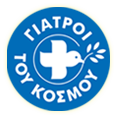Bowls filled with water to detect tremors and get out of the house in time.
Madrid, 13th of May 2015. Yesterday another earthquake with an intensity of 7.3 hit Nepal, which was already dealing with the consequences of the 25th of April big earthquake. Doctors of the World team is safe and working in coordination with the Nepali authorities to provide healthcare to the affected population.
At one o’clock in the afternoon, another earthquake hit the country. There had been a number of aftershocks since the 25th of April and the population had to learn what to do when the earth shakes: to go out of the building as quickly as possible and stay in the middle of the street. When they sleep, many people get a bowl filled with water beside them so as to detect the tremors sooner and get out of the house in time. There will be many people sleeping outside again to feel safe, in the squares and parks of the cities and villages which were affected by yesterday earthquakes.
Javier Arcos is a member of Doctors of the World team in Nepal and he told us about what people went through in the capital. “I was in the center of Kathmandu, just getting out of the Ministry of Health when the floor started shaking violently. You could see street furniture moving a lot and people started to run. From what I’ve seen, there was not much additional damage, I haven’t seen any new collapsed building, but given the intensity of the earthquake, there must be considerable damage in the mountains, though it is too early to know it.” And it was the case. One of these remote areas is Golché, which is far away from the closest track and can only be reached after several hours walk. Doctors of the World is also working there and as Marius Musca explained: “This earthquake has been very powerful and so were the aftershocks. It seemed like we were on a boat; the ground was making waves. According to a satellite phone conversation, new injured persons are coming to our clinic in Golché.”
The health workers are safe and the facilities are operational so the population can be attended.
According to the evaluation of the Nepali government, 1300 people were hurt and around 40 were killed by yesterday earthquake. In the district of Ramechhap which is 200 kilometers away at the southeast of Kathmandu, the hospital was not operating since the 25th of April but the situation seems to be under control. The most serious cases were evacuated by helicopter to the biggest hospitals in Kathmandu and the other injured people were attended in Ramecchap hospital, which we rehabilitated during the last two weeks.
The most complex cases were referred to the National Trauma Center of the Bir Hospital in Kathmandu, where 2 surgeons of our team have been working with Nepali health workers since the 3rd May.
